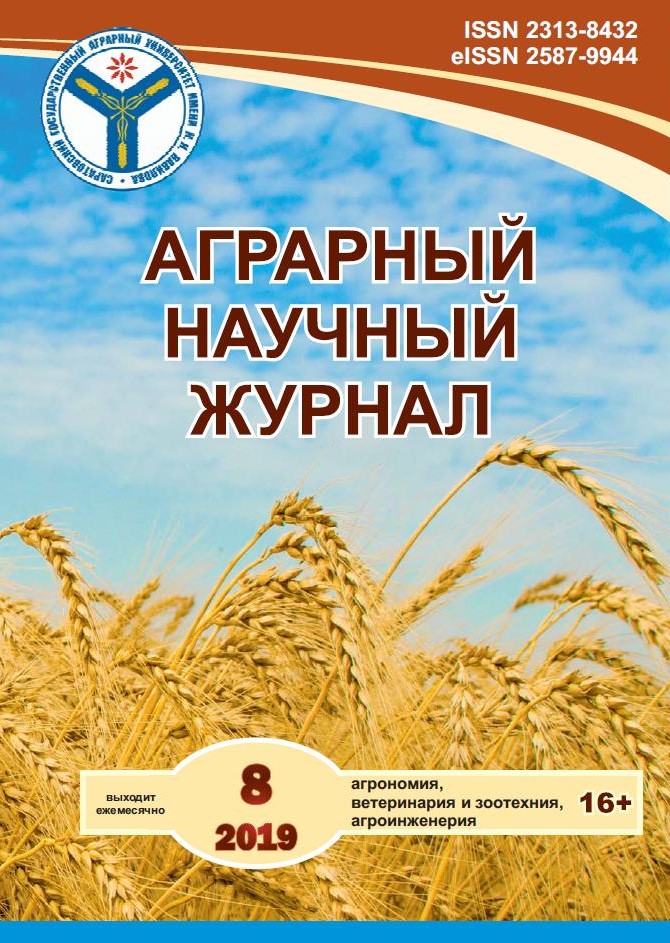Seed production of lemon balm and the quality of its seeds in the middle of the Volga region
DOI:
https://doi.org/10.28983/asj.y2019i8pp34-36Keywords:
seed productivity, mineral fertilizers, lemon balm, germination, ripeness, meteorological conditions, seed coloringAbstract
The influence of mineral fertilizers on seed productivity and quality of obtained seeds of lemon balm (Melissa officinalis L.) was studied in the field small-scale experiment under conditions of unstable moistening of the Mordovia Republic. As a result, it was found that seed productivity varied depending on weather conditions and the types of fertilizers introduced. It was shown that the maximum productivity of Melissa officinalis plants was on the variant with the use of phosphorus-potassium fertilizers at a dose of P60K90 (71.2±78.5 g/m2 in 2017 and 48.8±4.3 g/m2 in 2018), while it exceeded the control variant by 74-91 %. The total germination of seeds of Melissa officinalis practically did not change over the years, and was in the range of 37-39 %. Separation of seeds according to the degree of aging allowed to increase germination 11.4-13.3 %.
Downloads
References
2. Ведров Н.Г. Селекция и семеноводство полевых культур: учеб. пособие. – Красноярск: КГАУ, 2008. – 300 с.
3. Викторов В.П., Черняева Е.В. Интродукция растений: учеб. пособие. – М.: Прометей, 2013. – 207 с.
4. Методика государственного сортоиспытания сельскохозяйственных культур. Вып. 3. Масличные, эфиромасличные, лекарственные и технические культуры, шелковица, тутовый шелкопряд / под ред. М.А. Федина. – М., 1983. – 184 с.
5. Назаренко Л.Г. Эфиромасличные, пряно-ароматические и лекарственные растения. – Симферополь: Таврия. 2003. – 217 с.
6. Полуденный Л.В. Эфиромасличные и лекарственные растения. – М. : Колос, 1989. – 282 с.
7. Расширение биоразнообразия возделываемых масличных культур в степном Поволжье / В.Б. Нарушев [и др.] // Вестник Саратовского госагроуниверситета им. Н.И. Вавилова. – 2012. – № 2. – Режим доступа: https://elibrary.ru.
8. Черкашина Е.В. Экономика и организация рационального использования и охраны земель эфиромасличной и лекарственной отрасли в Российской Федерации: автореф. дис. … д-ра экон. наук. – М., 2014. – 40 с.
9. Шаламова Е.Л. Технология возделывания лекарственных растений. – Горно-Алтайск: РИО ГАГУ, 2009. – 54 с.








